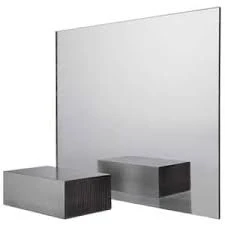

Understanding Hermetically Sealed Double Glazed Units
In the realm of modern architecture and energy efficiency, hermetically sealed double glazed units (HSDGUs) play a pivotal role. These units not only enhance the aesthetic appeal of buildings but also contribute significantly to energy conservation and thermal comfort. This article delves into the construction, benefits, and applications of hermetically sealed double glazed units, shedding light on why they are essential in contemporary building design.
What Are Hermetically Sealed Double Glazed Units?
Hermetically sealed double glazed units consist of two panes of glass separated by a spacer bar and sealed tightly at the edges. This design creates an insulating air space that reduces heat transfer between the inside and outside of a building. The term hermetically sealed emphasizes the importance of an airtight seal, which prevents the ingress of moisture and air into the space between the glass panes. This seal is typically achieved through the use of materials like silicone or polyisobutylene, ensuring a long-lasting barrier.
Construction and Technology
The construction of HSDGUs involves precision engineering and manufacturing processes. The glass used can be treated with various coatings to enhance its thermal insulation properties, control the amount of sunlight entering the building, and reduce glare. Low-emissivity (Low-E) coatings are often applied to the glass surface, which reflects heat back into the building during winter while allowing sunlight to pass through.
In addition to this, the airspace between the two panes of glass can be filled with inert gas, such as argon or krypton, further improving the thermal performance. These gases have lower thermal conductivity than air, thereby enhancing the insulating properties of the unit.
Benefits of Hermetically Sealed Double Glazed Units
1. Energy Efficiency One of the primary advantages of HSDGUs is their ability to significantly reduce energy consumption. By minimizing heat loss in the winter and heat gain in the summer, buildings equipped with these units require less energy for heating and cooling, leading to lower utility bills.

2. Thermal Comfort HSDGUs help maintain a consistent indoor temperature, which is crucial for occupant comfort. By controlling temperature fluctuations, they provide a stable environment, making spaces more enjoyable to live and work in.
3. Noise Reduction In addition to thermal insulation, hermetically sealed double glazed units also offer substantial sound insulation. The airspace between the panes acts as a buffer against external noise, making them ideal for buildings located in busy urban areas.
4. Condensation Control The airtight seal of HSDGUs prevents moisture from entering the space between the glass panes, reducing the risk of condensation that can lead to mold growth and damage. This is particularly important in humid climates where condensation can be a significant issue.
5. Enhanced Security The dual layers of glass increase the strength of the windows, offering better resistance against break-ins compared to single-pane options. This added security can be crucial for both residential and commercial buildings.
Applications of Hermetically Sealed Double Glazed Units
HSDGUs are versatile and can be used in a wide range of applications. They are commonly found in residential buildings, commercial offices, schools, and hospitals. In commercial buildings, the combination of aesthetics and energy efficiency makes them popular for large glass facades. Additionally, they are increasingly being used in sustainable architecture projects where energy conservation is a priority.
Conclusion
Hermetically sealed double glazed units represent a significant advancement in building materials technology. Their ability to enhance energy efficiency, improve comfort, and contribute to a quiet indoor environment makes them an invaluable asset in contemporary architecture. As demand for sustainable and energy-efficient buildings continues to rise, the role of HSDGUs will undoubtedly become even more pronounced. Investing in these modern units not only benefits the occupants but also contributes positively to the environment, paving the way for a more sustainable future in building design.